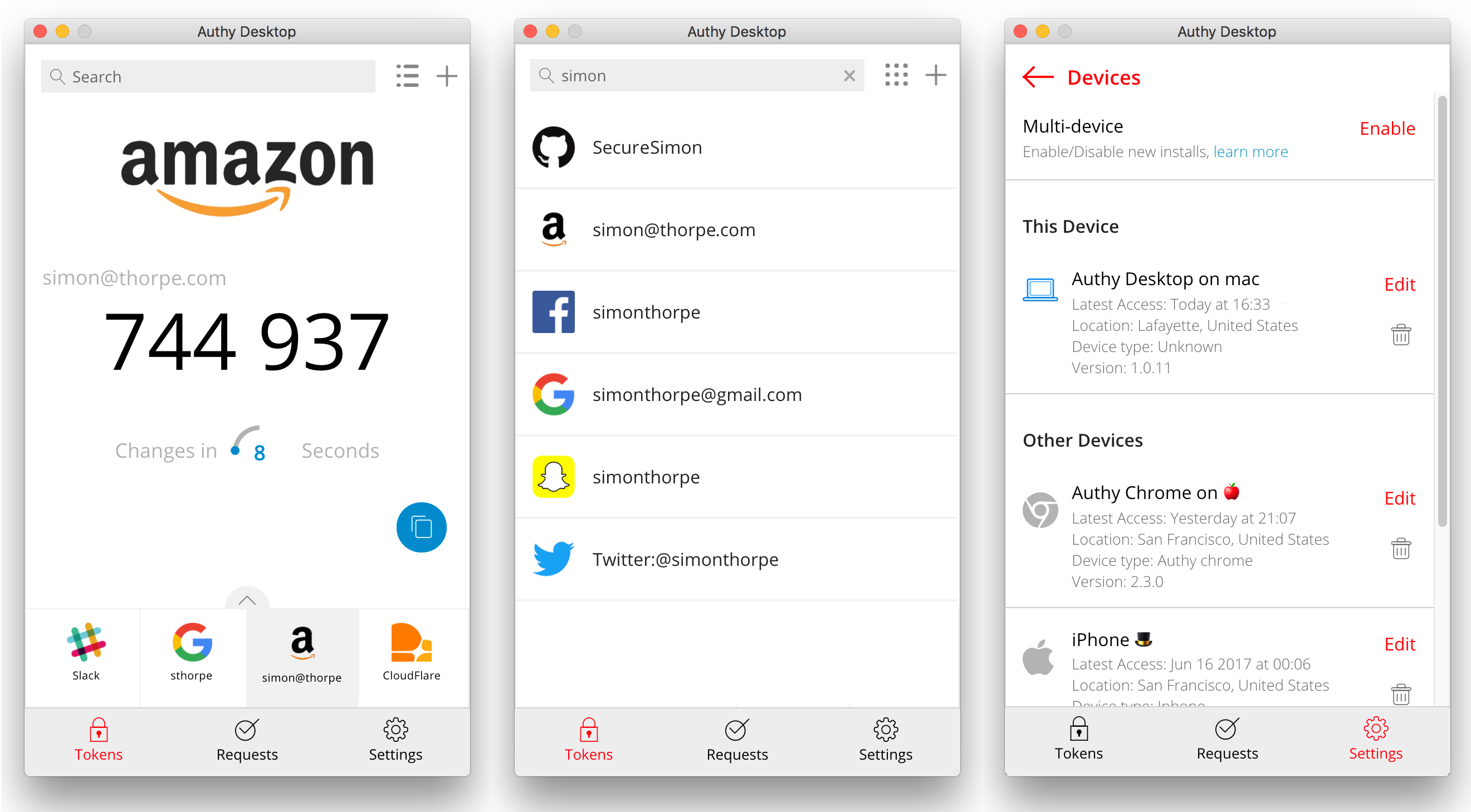

- #AUTHY DESKTOP VERSION RELEASE INSTALL#
- #AUTHY DESKTOP VERSION RELEASE PASSWORD#
- #AUTHY DESKTOP VERSION RELEASE FREE#
I'll define "trusted device" as any device which has a 2FA secret on it (e.g. It sounds like there are 2 distinct attack vectors you are considering: malware installed on a trusted device and a local attacker gaining access to a trusted device. Sorry this is so long, but I felt it important to be relatively thorough. Have I not simply made the entirety of these security precautions vulnerable to a single vector of attack at this point? I grant there's a limited version of this risk if I have, say, LastPass and Authy both installed on the same mobile device (for the record I do not), but the colossal attack surface on a desktop/desktop-browser/human-user/intentionally-minimised-interactions-and-decision-points combo gives me cold sweats.

#AUTHY DESKTOP VERSION RELEASE INSTALL#
Aaaaand then I install another (your) browser extension. Now I have more best practice advice, and I establish 2FA for accounts that support it. Excellent, so far I have followed the 'best advice' as it's universally given. This is installed as an extension in my browser.
#AUTHY DESKTOP VERSION RELEASE PASSWORD#
Being a human, I need a software-based password manager to enable this. IANAE in identification & authentication systems, but doesn't using a browser plugin for the 'something you have' portion of 2FA negate the principal benefit - that which, the algorithm/app/token providing the OTP is inaccessible to an attacker with access to the primary login interface? Let's say I'm following accepted best practice (ignoring for a moment the current NIST 800-63B draft and its aggressively divergent recommendations about remembered secrets), and using unique, randomly generated passwords for every single account authentication. If 2FB sounds interesting, check out a short screencast of what the login flow looks like using 2FB and add yourself to the email list if you want to get notified when you can try it out. This means you can maintain the 2FA level of security on your accounts and get to work more quickly. That is why I am working on a project called Two Factor Buddy (2FB), which integrates directly with the browser to automate the entry of 2FA codes during the login process with all of your favorite third party services (e.g. When trying to login and get work done, it is frustrating that the typical 2FA login flow requires a context switch to a completely different device, especially one that will likely distract you with non-work related notifications and content. However, I think that current solutions for soft token two factor authentication (2FA) generally do not provide a good user experience for end users.
#AUTHY DESKTOP VERSION RELEASE FREE#
Of those options, I use Authy because it is also free and has hands down the best UX. I have used FreeOTP, Google Authenticator, Authy, and LastPass Authenticator.


 0 kommentar(er)
0 kommentar(er)
